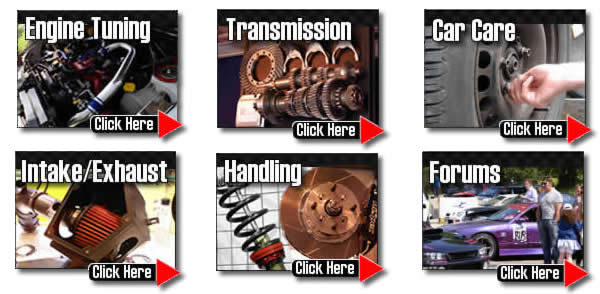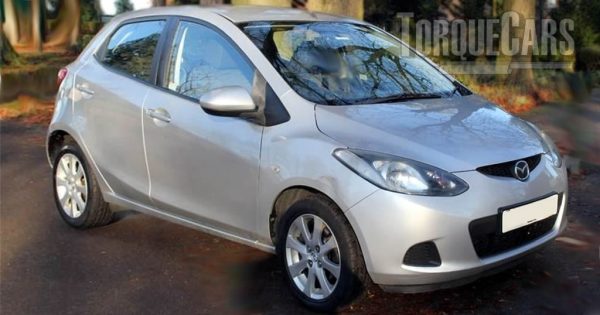Tuning the Mazda 2 (Demio)
"Thanks for reading this Mazda 2 tuning article."
The Mazda 2 is a awesome car modification project to fill your spare time.
The Mazda Demio was branded the Mazda2 in many markets and previously as a 121.
The third generation is indistinguishable from the first generations, thanks to giant advances in design and styling.
As a small light car, the Mazda2 responds really well to tuning mods, with even small increases in power being noticed by the driver.
If you do your research then you can create an awesome Mazda 2 but don't be fooled there are lots of tuning kits out there that will simply not suit it read our unbiased guides first.

Handling/Suspension upgrades
Handling modifications are a good place to start for the Mazda 2.
Fully adjustable suspension allows you to fine tune the handling of you Mazda 2 radically improving your drive.
Drop the car by as much as 24mm - 40 mm. and fit motorsport grade stiffer dampers, bigger drops will need other modifications in most instances.
Turning our attention to the Mazda 2's engine we need to get a bit more power out of the top end.
Sadly with smaller engine sizes you are wasting your time spending money on modifications, so if this applies to you get yourself an engine swap then apply the following mods.
Tuning modifications.
Typically these modified modifications are usually carried out by our members, decide how far you wish to go in your tuning project before you begin.
First generation (DW 1996–2002)
- 1.3 L B3-ME (1996–1998)
- 1.5 L B5-ME (1996–1998)
- 1.3 L B3E (1999–2001)
83 PS 80 lbft - 1.5 L B5E (2000–2001)
100 PS 94 lbft)
Second generation (DY 2002–2007)
Mazda Demio:
- 1.3 L ZJ-VE 91 PS (90 hp) at 6000 rpm, (91 lbft) at 3500 rpm
- 1.5 L ZY-VE 113 PS (111 hp) at 6000 rpm, 103 lbft) at 4000 rpm
Mazda 2:
- 1.25 L MZI C2 70 PS (69 hp) at 5700 rpm, (81 lbft) at 3500 rpm
- 1.4 L MZI C4 80 PS (79 hp) at 5700 rpm, (91 lbft) at 3500 rpm
- 1.6 L MZI C6 100 PS (99 hp) at 6000 rpm, 146 N⋅m (108 lbft) at 4000 rpm
- 1.4 L MZ-CDTi Diesel 68 PS (67 hp) at 4000 rpm, 160 N⋅m (120 lbft) at 2000 rpm
Third generation (DE 2007–2014)
1.3L (Miller Cycle)
- 1,349 cci4 (ZJ-VEM)
90 PS (89 hp)@6000, (89 lbft)@4000 - 1.3L MZR (Low Power)
1,349 cc i4 (ZJ-VE MZR)
75 PS (74 hp)@6000, (89 lbft)@3500 - 1.3L MZR (ZJ-VE)
1,349 cc i4 (ZJ-VE)
87 PS (86 hp)@6000, (91 lbft)@3500 - 1.3L MZR
1,349 cc i4 (ZJ-VE MZR)
86 PS (85 hp)@6000, (90 lbft)@3500 - 1.5L MZR (ZY-VE)
1,498 cc i4 (ZY-VE)
103 PS (76 kW; 102 hp)@6000, (103 lbft)@4000 - 1.5L MZR
1,498 cc i4 (ZY-VE MZR)
102 PS (101 hp)@6000, (101 lbft)@4500
Diesel engines
- 1.4L MZ-CD
1,399 cc i4 turbo (Y4)
68 PS (67 hp)@4000, (118 lbft)@2000 - 1.6L MZ-CD
1,560 cc i4 turbo (Y6)
90 PS (89 hp)@4000, (156 lbft)@1750
Fourth generation (DJ 2014–)
- 1.3L Skyactiv-G 2014–
- 1,298 cc i4 (P3-VPS)
93 PS (92 hp)@5800, (91 lbft)@4000 - 1.5L Skyactiv-G 2014–
- 1,496 cc i4 (P5-VPS)
110 PS (108 hp)@6000, (104 lbft)@4000
Diesel engines
- 1.5L Skyactiv-D 2014–
1,499 cc i4 turbo (S5-DPTS)
105 PS (104 hp)@4000, (184 lbft)@1500–2000
Getting the right performance upgrade kits for your planned usage of the car is vital. Stage 3 competition upgrades just don't work well on the road making the car difficult to drive.

Please watch our introduction Video tutorial to car tuning. Be sure to subscribe and support our new channel.
How to tune your car
- Improve the handling
Focus on Suspension improvements, such as coilovers and make sure the bushings are in good order and that the alignment is correct. Then focus on improving the brakes, with a big disk brake conversion kit and fast road brake pads.
- Remove restrictions
Focus on the intake and exhaust with filters being the common point of restriction in a tuned car. Intercoolers may also become restrictive on turbo engines so this may also need to be uprated.
- Burn more fuel & air
Increase the fuelling so it matches the air coming into the engine. The ratio is important so you need to improve the fuel pump and injectors, so the head mods, big valve conversions, fast road camshafts and forced induction upgrades extra supply of air is adequately met.
- Test and replace any weak parts
Weak areas are commonly the clutch, the turbocharger and pistons and crankshaft in a highly tuned engine. Makes sure these components will cope with your power aspirations.
- The Tune or Remap
A cars ECU controls the fuel, timing, spark and even the turbo in some cases, so to fully extract your gains you should remap the car last and this will fully release the power. Some cars are easy to map, and others require piggyback ECU's or aftermarket ECU's but this is the most vital step of your tuning project.
Modifying to Stage 1:
Remap, Alloy wheels, Sports exhaust, Panel air filter, Suspension upgrade (drop 24mm - 40 mm.), Lighter flywheel.
Modifying to Stage 2:
Power/Sport clutch, fuel pump upgrades, high flow fuel injector, Fast road cam, Ported and polished head.
Modifying to Stage 3:
Adding or upgrading forced induction (turbo/supercharger), Internal engine upgrades (pistons/head/valves), Sports gearbox, Engine balancing, Competition cam.
Your aim when modding your car should be a wide torque curve. You don't want all the power to be at the top end of the rev range unless you are creating a competition car.
The aim of our advice is to give a starting base of modifying modifications and point you in the right direction, our forum is where you can ask for more detailed advice and tips on your modified car project, the best tuning upgrades and all aspects of modding cars.One of the best mechanical parts you can do to your NASP engine is to fit a fast road cam .
It improves the intake and exhaust durations and pushes up the power if done right. Ideally you'd add other mods and finish up with a remap. We'd also caution you not to go with a competition cam as this affects the engines idling and general town driving characteristics.
You will need to ensure that the engine is not starved of fuel so will need to pay attention to the fuelling.
If you find you experience flat spots and surges after your tuning kits you should check the fuelling and try a higher octane fuel as well. To get sufficient fuel you may need to improve the injectors on your engine.
Uprate the fuel pump to cope with the extra fuel requirements of your tuned Mazda 2's uprated injectors.
Intake and Exhaust Tuning.
Breathing mods are usually next up. Please note that WE DO NOT FIND IMPROVEMENTS WITH INDUCTION KITS, unless you have tuned your car massively and are finding that the standard air intake has become a restriction.
Maximum power gains come from a full induction kit with a cold air feed on heavily tuned engines, this can be sited within an air box but a performance panel filter should suffice for most applications. TorqueCars suggest you use a panel air filter as these are easy to clean and maintain and generally perform better than paper ones.
Do not go with the biggest exhaust you can find this will slow the exhaust rate - the best for power gains are usually between 1.5 to 2.5 inches. It is the shape and material more than the bore size.
Getting the head polished and ported will further help more air into each cylinder. This is definitely a job for a pro with a flow bench. In nearly all cases of Mazda 2 tuning your clutch will start to complain and this needs an upgrade - read our overview on clutches for more information. The best mods we recommend for your Mazda 2 are Remapping or piggy back ecu, fast road cam and air intake and exhaust.
Remaps offer phenomenal power gains on all turbo charged cars. On NASP engines the benefits are doubtful. However a flashed ecu on a NASP engine will help unleash the potential if you have done a lot of mods.
We've also come across some owners toying with twin charging applications and making some seriously high power figures.
The most phenomenal power gains for NASP engines usually involve the addition of forced induction. Superchargers are often easier to add than a turbo. With a turbo the power curve is related exponentially to the engine speed making it harder to map.
It is simpler to map a supercharger because the boost is directly proportional to engine speed on a linear curve. Adding forced induction will nearly always require a lower compression ratio or water injection.
Alloy wheel upgrades.
The benefits of alloys include a lower unsprung weight and more efficient brake cooling. Pay attention to your choice of tyres (tires) for your car, a good soft compound tire can really enhance your cars handling. The drawback to large alloys on your Mazda 2 is that you're changing your effective final drive ratio so this will have a negative effect on performance.
With this in mind aim to keep the overall rolling diameter of the wheel the standard factory sizes. In all cases not going larger than 17 inches.
For more information on Tuning your car please join us in our friendly forum where you can discuss Mazda 2 options in more detail with our Mazda 2 owners. It would also be worth reading our unbiased tuning articles to get a full grasp of the benefits and drawbacks of each modification.
Please help us improve these tips by sending us your feedback in the comments box below.
We love to hear what our visitors have got up to and which mods work best for them on each model of car. Comments are used to improve the accuracy of these articles which are continually updated.
If you liked this page please share it with your friends, drop a link to it in your favourite forum or use the bookmarking options to save it to your social media profile.
Check out TorqueCars new YouTube channel, and see their awesome new content...
Feedback
Please use our forums if you wish to ask a tuning question, and please note we do not sell parts or services, we are just an online magazine.
Help us improve, leave a suggestion or tip
